I want to do web scraping of this site. I have seen that the APIs are available but, as suggested by duraid in my previous question, it is not advisable to use them.
So I tried to use Node.js and Phantom.js with Phantom.
This is my code:
var phantom = require('phantom');
// object of methods
var methods = {};
var loadInProgress = false;
var url = 'http://data.un.org/Data.aspx?q=population&d=PopDiv&f=variableID%3A12';
methods.download = async function(req, res) {
const instance = await phantom.create();
const page = await instance.createPage();
await page.on('onResourceRequested', function(requestData) {
console.info('Requesting', requestData.url);
});
await page.on('onConsoleMessage', function(msg) {
console.info(msg);
});
await page.on('onLoadStarted', function() {
loadInProgress = true;
console.log('Load started...');
});
await page.on('onLoadFinished', function() {
loadInProgress = false;
console.log('Load end');
});
const status = await page.open(url);
console.log('STATUS:', status);
const content = await page.property('content');
console.log('CONTENT:', content);
// submit
await page.evaluate(function() {
document.getElementById('crID%3a250').value = 'crID%3a250'; // France
document.getElementById('timeID%3a79').value = 'timeID%3a79'; // 2015
document.getElementById('varID%3a2').value = 'varID%3a2'; // Medium
document.getElementById('ctl00_main_filters_anchorApplyBottom').submit(); // submit button
});
var result = await page.evaluate(function() {
return document.querySelectorAll('html')[0].outerHTML;
});
console.log('RESULT:', result);
await instance.exit();
};
module.exports = methods;
(How can they select more countries and more years?)
I tried to select France as Country or Area, 2015 as a Year and medium as a Variants.
So crID%3a250 is id of element:
<input type="checkbox" id="crID%3a250" value="crID%3a250" name="France" />
<label for="crID%3a250">France</label><br />
timeID%3a79 is id of element:
<input type="checkbox" id="timeID%3a79" value="timeID%3a79" name="2015" />
<label for="timeID%3a79">2015</label><br />
varID%3a2 is id of element:
<input type="checkbox" id="varID%3a2" value="varID%3a2" name="Medium" />
<label for="varID%3a2">Medium</label><br />
And then ctl00_main_filters_anchorApplyBottom is id of button element:
<div class="All">
<img src="_Images/IconUpdateResults.png" alt="Update" width="11px" height="11px" title="Apply filters" /> <a href="javascript:;" id="ctl00_main_filters_anchorApplyBottom" title="Apply filters" onclick="ApplyFilters(SendFilterRequest);">Apply Filters</a>
</div>
But what I got is the web page itself (in HTML), not the data that interest me. So it's as if I had not selected any parameters. Why?
EDIT 1
After the advice of @Vaviloff I tried to change the code but without success. My server-side language is Node.js.
Using Phantom I modified the code like this:
methods.download = async function(req, res) {
const instance = await phantom.create();
const page = await instance.createPage();
await page.on('onResourceRequested', function(requestData) {
console.log('Requesting', requestData.url);
});
await page.on('onConsoleMessage', function(msg) {
console.log(msg);
});
const status = await page.open(url);
console.log('\n\nSTATUS:', status);
// submit
await page.evaluate(function() {
var countries = {
'Albania': 'crID%3a8',
'Austria': 'crID%3a40',
'Belgium': 'crID%3a56',
'Bulgaria': 'crID%3a100',
'Croatia': 'crID%3a191',
'Cyprus': 'crID%3a196',
'Denmark': 'crID%3a208',
'Estonia': 'crID%3a233',
'Finland': 'crID%3a246',
'France': 'crID%3a250',
'Germany': 'crID%3a276',
'Greece': 'crID%3a300',
'Iceland': 'crID%3a352',
'Ireland': 'crID%3a372',
'Italy': 'crID%3a380',
'Latvia': 'crID%3a428',
'Netherlands': 'crID%3a528',
'Norway': 'crID%3a578',
'Poland': 'crID%3a616',
'Portugal': 'crID%3a620',
'Romania': 'crID%3a642',
'Slovakia': 'crID%3a703',
'Slovenia': 'crID%3a705',
'Spain': 'crID%3a724',
'Sweden': 'crID%3a752',
'Switzerland': 'crID%3a756',
'United Kingdom': 'crID%3a826'
};
// 2018 - 1980
var years = ['timeID%3a83', 'timeID%3a82', 'timeID%3a81', 'timeID%3a79', 'timeID%3a78', 'timeID%3a77', 'timeID%3a76', 'timeID%3a75', 'timeID%3a73', 'timeID%3a72', 'timeID%3a71', 'timeID%3a70', 'timeID%3a69', 'timeID%3a67', 'timeID%3a66', 'timeID%3a65', 'timeID%3a64', 'timeID%3a63', 'timeID%3a61', 'timeID%3a60', 'timeID%3a59', 'timeID%3a58', 'timeID%3a57', 'timeID%3a55', 'timeID%3a54', 'timeID%3a53', 'timeID%3a52', 'timeID%3a51', 'timeID%3a49', 'timeID%3a48', 'timeID%3a47', 'timeID%3a46', 'timeID%3a45', 'timeID%3a43', 'timeID%3a42', 'timeID%3a41', 'timeID%3a40', 'timeID%3a39', 'timeID%3a37'];
// select countries
for(var c in countries) {
document.getElementById(countries[c]).setAttribute('checked', true);
}
// select years
for(var y in years) {
document.getElementById(years[y]).setAttribute('checked', true);
}
// select variants
document.getElementById('varID%3a2').setAttribute('checked', true); // medium
// click button
document.getElementById('ctl00_main_filters_anchorApplyBottom').click();
});
console.log('\nWaiting 1.5 seconds...');
await timeout(1500);
// get only the table contents
var result = await page.evaluate(function() {
return document.querySelectorAll('.DataContainer table')[0].outerHTML;
});
console.log('\n\nRESULT:', result);
elaborateResult(result);
await instance.exit();
};
function elaborateResult(res) {
var el = document.createElement('html'); // ** ERROR HERE **
el.innerHTML = result;
console.log('\n\nTD ELEMENTS:', el.getElementsByTagName('td'));
//var obj = utilFunc.createJsonObjectPop(year, country, population);
//console.log(obj);
}
There are two errors:
resultcontains only the values that are on the first page of the results, but with the selections made you get 22 pages of results and I don't understand how I can get all the values that interest me and link them in the variableresult.- assuming to have solved the problem in point (1), now I should elaborate the results obtained and create an object like this:
var date = [{year: 2018, country: 'Albania', population: 2934.363}, {year: 2017, country: 'Albania', population: 2930.187}, ..., {year: 1980, country: 'United Kingdom ', population: 56265.475}]
This is what the elaborateResult(res) function should do (of course, the function is not complete, I have to finish it but I get an error at the first line), but I get the error:
ReferenceError: document is not defined
So I changed my strategy and I tried not to use Phantom but a normal request:
var options = {
uri: 'http://data.un.org/Handlers/DataHandler.ashx?Service=query&Anchor=variableID%3a12&Applied=crID%3a8&crID%3a40;timeID%3a79&DataMartId=PopDiv&UserQuery=population&c=2,4,6,7&s=_crEngNameOrderBy:asc,_timeEngNameOrderBy:desc,_varEngNameOrderBy:asc&RequestId=302',
transform: function(body) {
return cheerio.load(body);
}
};
methods.download = async function(req, res) {
request(options)
.then(function($) {
console.log('\n\nTHEN: ', $);
})
.catch(function(err) {
console.log('Error', err.stack());
});
}
If I run this code I get:
THEN: function (selector, context, r, opts) {
if (!(this instanceof initialize)) {
return new initialize(selector, context, r, opts);
}
opts = _.defaults(opts || {}, options);
return Cheerio.call(this, selector, context, r || root, opts);
}
In this case I have other problems.
- I don't know how to build the url.
In the example above I chose Albania (
crID% 3a8) and Austria (crID% 3a40) and 2015 as year (timeID% 3a79). Yet if I go to the link just built, I get as a result the data on Albania from 2100 to 2095. - I don't know how to select the years or how to select variants or how to change pages.
I feel a bit stupid but I can't get what I want... I'm stuck. Help would be very welcome!
